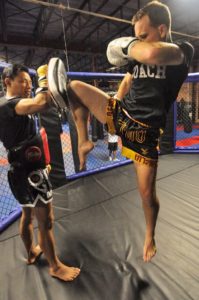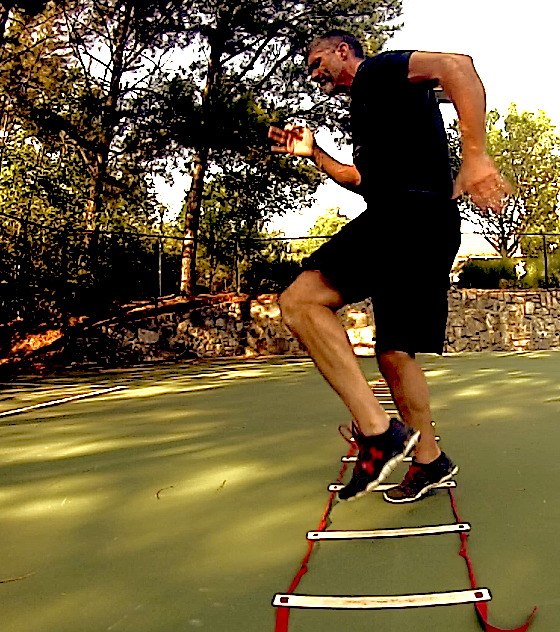
Knowing Your Energy Systems And Strength Training With A Purpose
- Did you know that understanding your energy systems will completely shape the way you prepare and train for a sport, fitness goal, or life situation?
- Did you know that whether you’re training to prepare for an MMA fight, the upcoming football season, or for and endurance event like a long distance swim the energy systems that you harness can make, OR break your success?
- Did you know that by applying and programming for the correct energy system you will completely transform your fitness level?
So for today’s topic I’m going to discuss the importance of bioenergetics (energy systems) as it pertains to your biological processes and it’s application to your strength training program. Ok I know what you’re thinking. Coach what in the hell are you talking about? That’s a great question and I’m going to work hard to clear that up right here in this article.
As you read this just keep in mind that the understanding of this is something I can guarantee you will transform the way you train and prepare for your sport, or life goals. This is a method I’ve been able to use and apply both with myself and with hundreds of athletes over the course of my 17 year career and I promise you it is tried and true!
Only one who devotes himself to a cause with his whole strength and soul can be a true master. For this reason mastery demands all of a person.–Albert Einstein
Your Biological Energy Systems…
Basically when talking about your bioenergetics it involves the the conversion of your food nutrients (carbs, proteins, fats) which are comprised of chemical stored energy into useful biological physical energy.
The point of this is that your body utilizes various energy pathways (or energy systems) to convert and utilize this newly created physical energy for different intensities of work. Basically your body utilizes 3 different energy systems. In short the phosphagen, glycolytic, and oxidative energy systems are what we are looking at here today. Each of these energy systems differ in their ability to supply energy for your body during activities of varying intensities and durations.
To put this in simpler terms just keep in mind that depending on what type of exercise, or sport you are engaged in this will ultimately determine which energy systems you will predominantly need to stimulate in your training.
The Primary Energy Systems…
1. Phosphagen: The phosphagen system primarily involves activity that last up to about 6 to 10 seconds. This is the most intense of the energy systems and this system utilizes ATP for short burst high intensity effort with activities such as sprinting and various forms of resistance training. The phosphagen system is active up to about the 10 second mark and is present at the beginning of all physical activity.
 2. Glycolysis: The glycolysis (glycolytic) system is the next system of energy production. In terms of exercise this is still an energy system that would be considered intense and is kind of split into 3 sub categories. At the first sub-category this energy system basically teams up with the phosphagen system utilizing the ATP, as well as, the stored glycogen in muscles and broken down glucose in the bloodstream to get it done up to about the 30 second mark!
2. Glycolysis: The glycolysis (glycolytic) system is the next system of energy production. In terms of exercise this is still an energy system that would be considered intense and is kind of split into 3 sub categories. At the first sub-category this energy system basically teams up with the phosphagen system utilizing the ATP, as well as, the stored glycogen in muscles and broken down glucose in the bloodstream to get it done up to about the 30 second mark!
So if we are working pretty hard up to 30 seconds we are still intense, but not as short burst intense as the phosphagen system. Are you still following me? It’s not too difficult. In essence the intensity at which you are capable of working starts out VERY HIGH and tapers off the longer the duration of exercise. You can notice this even if you’re still working at a more intense rate such as a sprint that extends a bit beyond the 100 yard mark.
 The glycolytic system here itself is just broken down a bit more, but the point is that when it’s all said and done this heavy bout of work will go to the 30 second mark. Once you are at the 30 second mark the next jump goes from 30 seconds to 2 minutes. This is just plain fast glycolysis.
The glycolytic system here itself is just broken down a bit more, but the point is that when it’s all said and done this heavy bout of work will go to the 30 second mark. Once you are at the 30 second mark the next jump goes from 30 seconds to 2 minutes. This is just plain fast glycolysis.
Finally, from 2 minutes up to 3 minutes you are now considered to be working at a moderate intensity and this is where glycolysis teams up with the oxidative system to carry you from the 2 minute to the 3 minute mark of work! This is the third and final sub-category in glycolysis. Are you still with me?
3. Oxidative: The oxidative energy system is the longest enduring energy system and it is also the least intense. From the 3 minute mark that we left off at the final stage of glycolysis and up involves the oxidative system.
This is basically the energy system that requires the most energy because it is long in duration. So activities that are long in duration and low in intensity require a large energy supply which is why they require the oxidative energy system.
Now what does all of this mean? Well the other day I was having a conversation with one of my MMA strength and conditioning students that happens to be looking at training for a fight. I’m going to use kind words to say that someone (like another fighter or student) might have slightly misadvised this person just a bit on how they should approach their conditioning. They were told that they had to get used to running up to 5 or 6 miles solely to dial in their conditioning. Now I know what you’re thinking…Ok Sherlock how was this person misadvised?
Well let’s start out by taking a look at a typical MMA fight. Usually an MMA bout has a 5 to 1 ratio meaning that the rounds last 5 minutes and there is 1 minute rest between the rounds. If we’re looking at Muay Thai work to rest ratio usually goes 3 to 1.
Now knowing what we know with that we are just slipping to the outside edge of the oxidative glycolytic energy systems. Yes, we have gone into the oxidative system, but remember that the sport of MMA is by NO MEANS a long steady state bout of exercise. It is primarily made up of intermittent bouts of short burst high intensity I’m trying to bury my foot and fist into your skull kind of a sport!
So when I say that this student was slightly misadvised what I mean is that the advice they were given for their conditioning may have been a little wrongly emphasized.
I mean in my professional opinion I think it’s ok to run and emphasize some distance, or endurance training to stress that oxidative system. After all, there has to be some foundation for long steady work.
However, I think recommending that a fighter “solely” condition their body for longer steady state cardio (purely oxidative) is bad advice. The truth is that they need to be emphasizing multiple energy systems and I think they would favor better by including more high intensity burst of sprints, circuits, and interval type work (including more phoshagen & glycolytic).
Once again it’s about using a bit of science to match up the energy systems needed to suit your competitive sport! Case closed.
The Takeway For Applying Your Energy Systems To Your Strength Training
Just remember that you want to work to train smart. If you’re an athlete that is more dominant in endurance events you want to emphasize your oxidative system. Likewise if you’re a power athlete you want to work on the phosphagen system. The reality is that you still want to stress some element of both extremes into your training regardless of your sport, but it’s where you place your emphasis that is the key.
Which energy system are you training in?
What are your fitness goals?
Please post up in the comments below and share.
Also if you want to learn how to tie these together then make sure you check out my brand new 90 Day MMA Strength And Conditioning Program right here below! I guarantee it’ll get you into the best shape of your life, or I’ll give you your money back no questions asked.
CLICK HERE TO ORDER MY 90 DAY MMA STRENGTH AND CONDITIONING PROGRAM!!!
It’s changing lives already!
Jump Rope: The Most Underrated Conditioning Exercise
Top 5 Plyometric Drills For Fitness
3 Top Conditioning And HIIT Workouts For MMA And Combat Fitness
5 Kettlebell Exercises For MMA Fitness
5 Unique Strength Drills To Enhance MMA Performance And Serious Fitness
Are you having trouble staying on top of your nutrition and all the supplements?
If so then get on the
Your health is worth more than a bulk multivitamin pill. You deserve Reliv Now. Made with LunaRich, Reliv’s epigenetic superfood, and loaded with vitamins, minerals and super-powered antioxidants, Reliv Now is built on the latest findings in nutrition science.
Its uniquely effective formula delivers a balanced array of the most advanced ingredients to give your body what it needs to thrive. Why settle for ‘fine’ when you can feel ‘great!’? Get your health up to speed with Reliv Now.
Cutting-Edge Science: Study shows potential of Reliv Now® + LunaRich X™ to support weight loss, heart health and metabolic wellness.
Are you looking to enhance your performance, recovery, and muscle mass development?
If so then get on the
Performance Nutrition
Most of us don’t come close to consuming the nutrients we need to keep our bodies performing at their peak. ProVantage meets the nutritional needs of physically active people and athletes to improve performance, endurance, recovery, and repair.
Powered by LunaRich, Reliv’s epigenetic superfood, this patented formula delivers 13 grams of muscle-building soy protein, plus other advanced ingredients like Tonalin®, MCTs, Creatine, CoQ10 and supercharged amino acids. ProVantage marks a major advancement in the science of sports nutrition.
It’s the edge you’ve been looking for.
Also for your strength training needs…
Get ONNIT kettlebells here (Click On Image)

Get Your ONNIT Weighted Vest (Click On Image):









